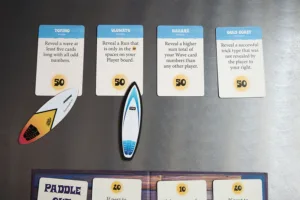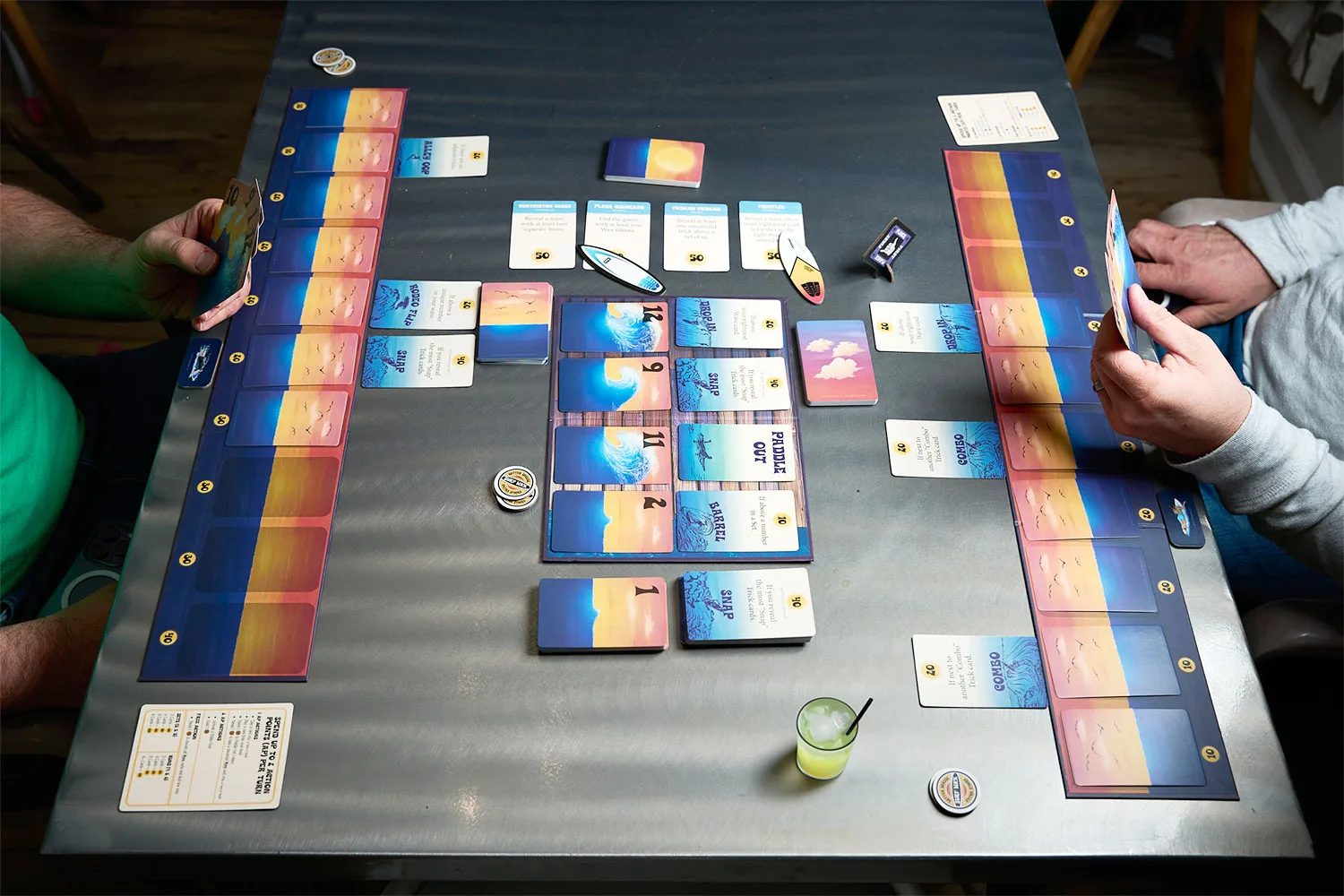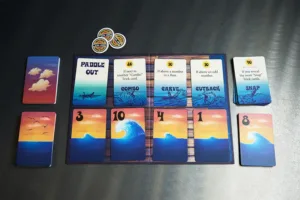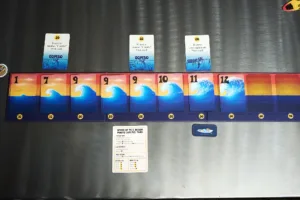 When I was growing up, I had a cousin who taught me to skimboard. If you don’t know what that is, you run and skim a board along the water that makes its way to shore. It’s a thin layer of water and runs out quickly. It was tough and I was never good at it, but it was fun and a great way to spend the summer. But surfing is a lifestyle. And those who love it, REALLY love it.
When I was growing up, I had a cousin who taught me to skimboard. If you don’t know what that is, you run and skim a board along the water that makes its way to shore. It’s a thin layer of water and runs out quickly. It was tough and I was never good at it, but it was fun and a great way to spend the summer. But surfing is a lifestyle. And those who love it, REALLY love it.
I wondered, with all the crazy things like weather and sharks that people overcome for that adrenaline high, what’s the biggest wave someone’s ever taken on. And now that I’ve asked, I bet you’re wondering too. It’s 86 feet. A two-story house averages between 18 and 25 feet. Let that sink in. Even if surfing isn’t quite your thing, there’s still a way to experience it vicariously.
Game Overview:
In The Perfect Wave, surfers want to crush the sickest wave off the coast. But they need showmanship and gnarly tricks to become the Big Kahuna. Practically speaking, players are trying to play the longest string of cards on their boards, either matching the card played before it or increasing. Think of this as the wave’s height, getting smaller as it approaches the shore. On these waves, players can play tricks, a way to score bonus points if its criteria is met. These tricks and wave cards are played face-down and revealed at the end of the game. Additionally, the longer a wave is, the more points it’s worth. But there is a catch.

Players will only score their longest wave and must get their surfer out to sea to catch it. They’ll do this using “paddle out” cards or discarding a wax token. This does introduce a little wrinkle, however. Players won’t be able to play cards to empty spaces behind the surfer, only above them and out. On top of scoring the longest wave and any tricks that satisfy their requirements, players can also score points for sets and runs played to their wave, as well as satisfying any conditions for activated public and private goals.
Here’s a quick breakdown of what a turn looks like. Players can use up to two action points to take and play waves and tricks from the Pier (i.e. Market) or their hands, move their surfer further out to sea, gain a wax token from the supply, and activate one of the public goals. Some of these actions require a wax token as an additional cost, and there’s a handy player aid to reference what players can do and their costs while playing. At the end of each turn, cards from the Pier are washed out to sea, discarding any cards that are in the rightmost Pier space. The game ends when the last card from the trick deck is drawn, continuing play until it reaches the first player. Points are tallied and whoever has the most is the winner.

Game Experience:
The Perfect Wave was the first game I sat down to demo at Gen Con last year. The rules are pretty straightforward as you might’ve guessed, but familiarize yourself with them if you’ll be teaching. The rulebook isn’t conducive for teaching on the fly, but this is hardly a unique complaint for rulebooks. More and more, I appreciate when player aids are included to help alleviate questions when playing a game for the first time.

The game is also fairly quick to set up since there are few components outside of the decks of cards. The only “time-consuming” part of the setup is removing a certain number of trick and “paddle out” cards based on the player count. If these “negatives” don’t deter you, I think it’ll fit well into a family’s collection.
Since it’s become frigidly cold out as of the time of this writing, I am longing for endlessly warm days at the beach, even if I can’t surf to save my life. The Perfect Wave does a nice job tying the theme into everything with this game. From the wax board tokens, the sun-kissed artwork on the waves, the ocean sprays cascading off the tricks, and tying those into the game mechanics, this feels like a surfing game through and through. You don’t have to love surfing or get your surfer lingo dictionary out to enjoy this. If the theme is appealing to you, this will help you get through the frigid air until summer.

Let’s wrap things up with a few “honorable mention” tidbits that you might want to know. I’ll keep it short and sweet. The Perfect Wave was packaged with a minimum amount of plastic, using paper bands around the cards for transport. Other publishers and companies are taking similar steps to be eco-friendly, and use less plastic, I appreciate that. The game scales and plays well regardless of the player count, which isn’t always the case. The game has a pretty small footprint, it can be played comfortably at a card table.
Final Thoughts
The Perfect Wave is a good game for the family. I don’t have any meaningful critiques, which honestly makes reviewing games like this easier. You’ve probably gleaned that this isn’t a meaty, complicated game. Even if there isn’t something new or groundbreaking, it’s still enjoyable. Sometimes that’s all you might want from a game. For all the minor “complaints”, rest easy that The Perfect Wave doesn’t wipe out.
Final Score: 3.5 Stars – A fun family game that, while not innovative, still offers a good time
 Hits:
Hits:
• Plays well regardless of the player count
• Great family-weight
• Solid integration of theme with design and mechanics
• Not a table hog
Misses:
• The rulebook could be structured a little better for teaching on the fly





















